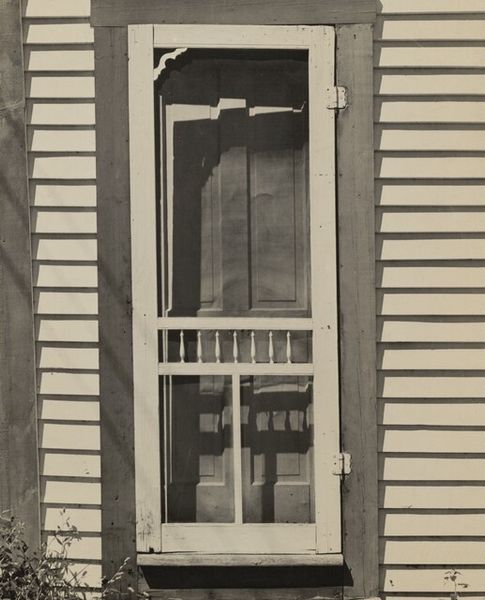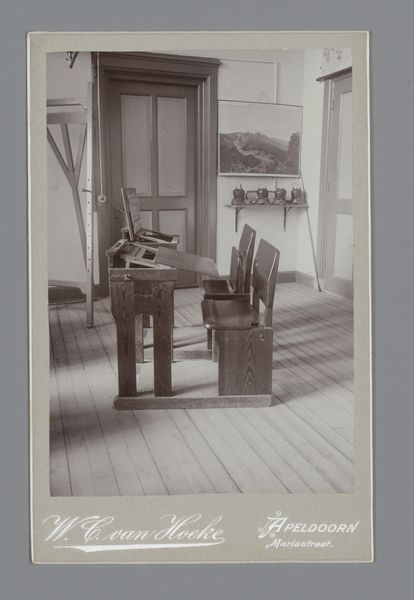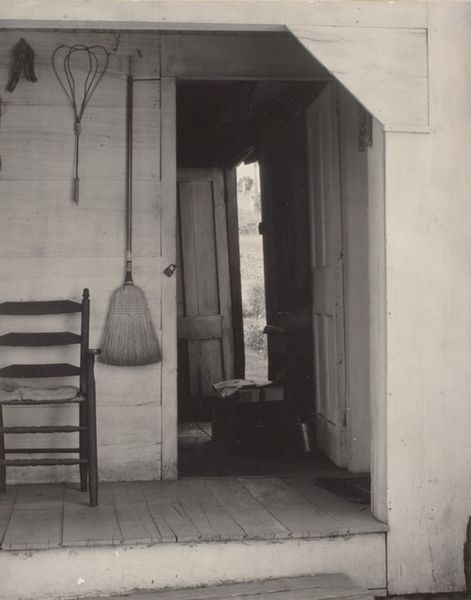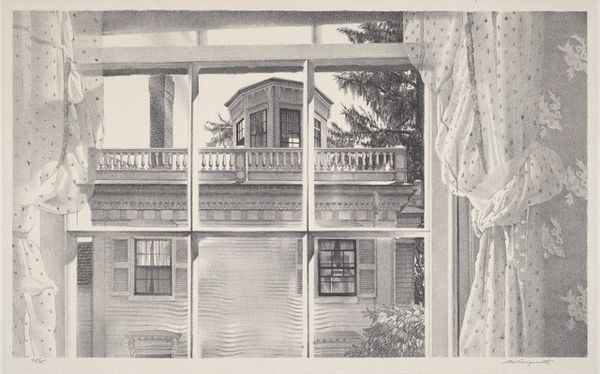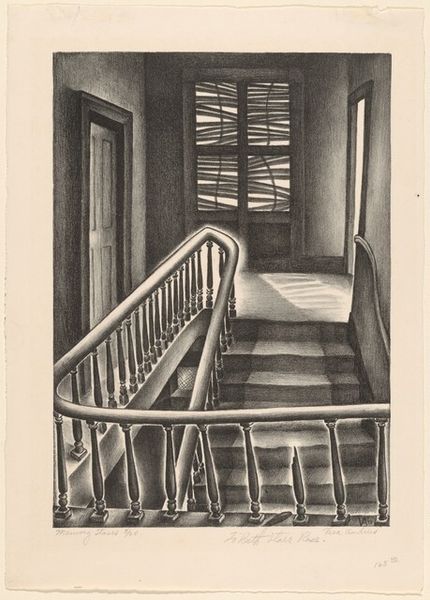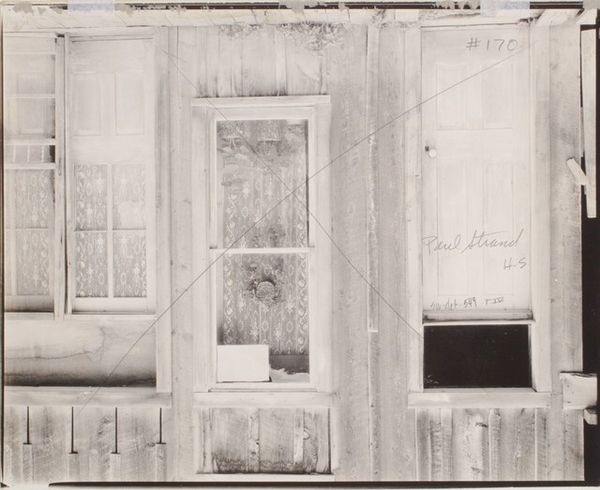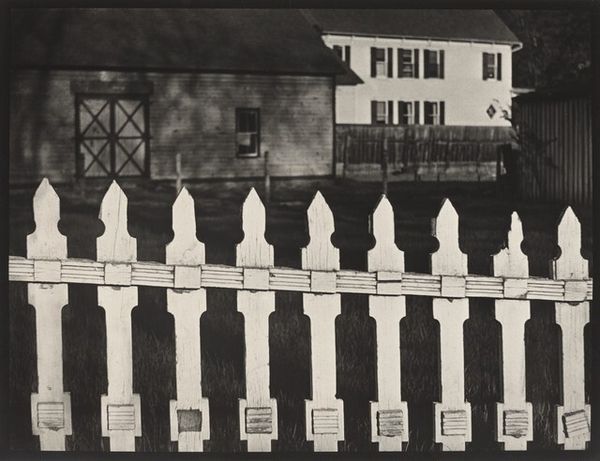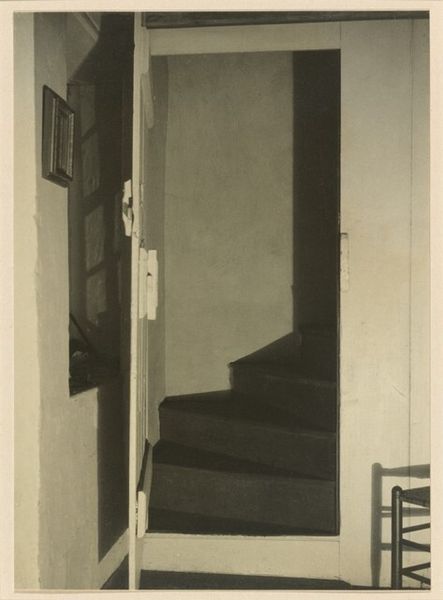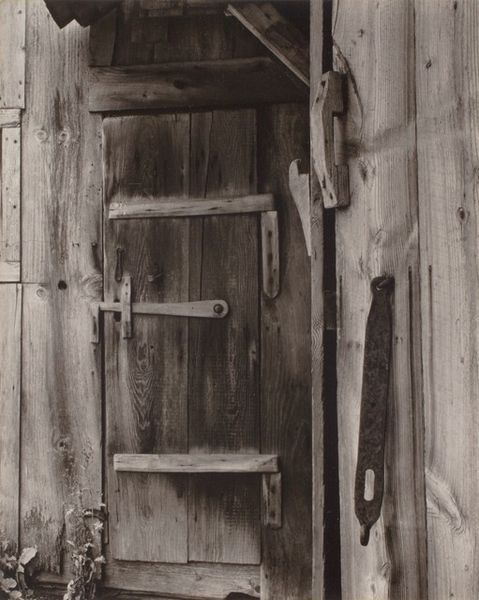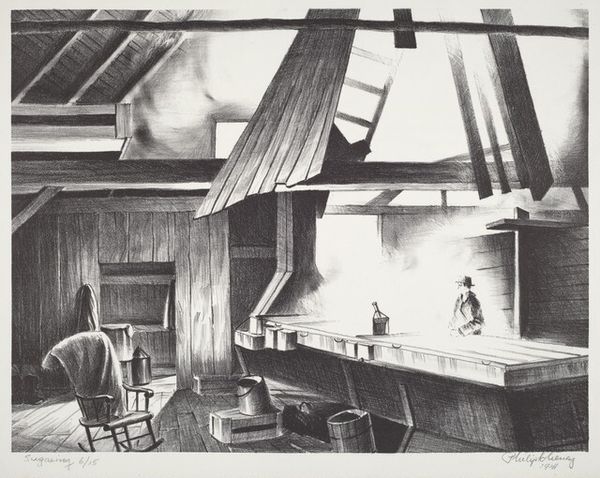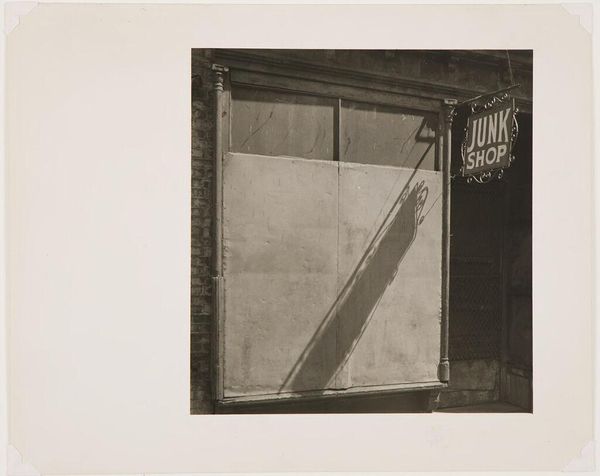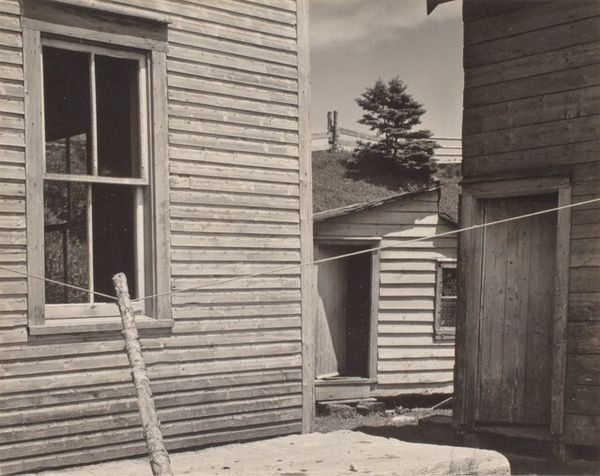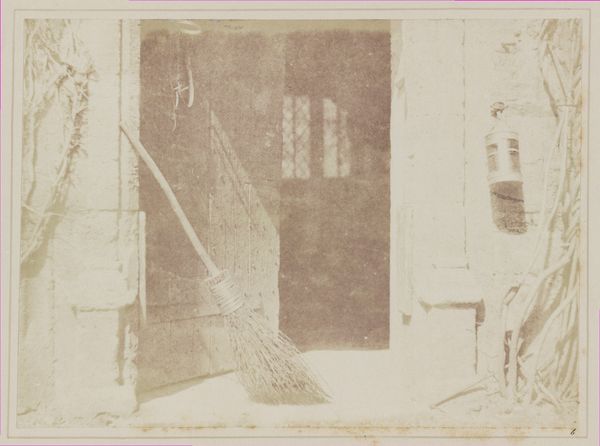
drawing, print, graphite
#
drawing
# print
#
landscape
#
geometric
#
line
#
graphite
#
realism
Copyright: National Gallery of Art: CC0 1.0
Curator: This quiet composition, aptly titled "Still Life," is by Francis Adams Comstock, using graphite and printmaking techniques. It’s a study in everyday scenes, yet loaded with subtle narratives. Editor: My first impression is of stillness, obviously, and of a kind of muted tension. The high contrast in lighting definitely contributes to a very rigid and stark composition. Curator: The subject matter—two chairs on a porch—invites questions about absence. Whose chairs are they? Why are they empty? Considering the era, we might even reflect on the tradition of women maintaining these domestic spaces, particularly in contrast to the public sphere then so dominated by men. Editor: The use of graphite and printmaking here is really crucial, you know? It allows for a high level of detail and subtle gradations in tone that evoke a strong tactile presence. These aren't just chairs; they are made from specific materials crafted in a particular way. Think about the labor and skill involved, especially if handmade. Curator: Precisely. And if we push that line of thinking a bit further, this image might not simply be of chairs, but perhaps a deeper observation about the human cost involved in making these objects and the exploitation of workers involved. What’s particularly interesting is the convergence of the “useful” and “art.” Editor: You're absolutely right to draw attention to that relationship, but to me, what really stands out is the play of light and shadow— the angular light, casting hard, geometrical shapes throughout the frame. Curator: Which also resonates with this feeling of melancholy—almost of Edward Hopper's "Automat". How might we understand it today? Are we implicated when looking at such images, particularly if we belong to structures and systems that marginalize? Editor: I agree; such questions resonate with me. Reflecting on the process and material of “Still Life” highlights production, while examining its gender and race implications brings in a fresh way of thinking about these kinds of objects. Curator: For me, this artwork serves as a powerful reminder of how artistic processes intersect with social realities. The materials, composition and their historical context enable insightful inquiries and discussions.
Comments
No comments
Be the first to comment and join the conversation on the ultimate creative platform.
